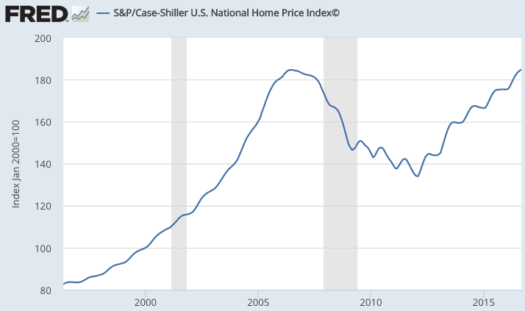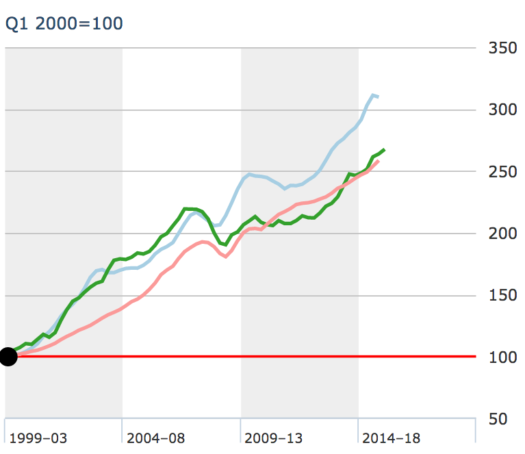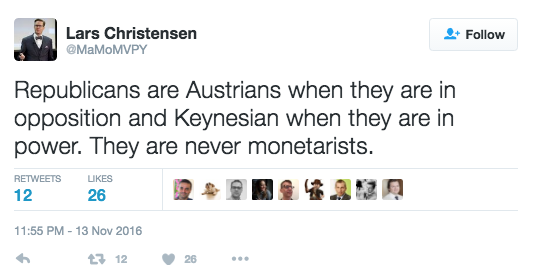Scott Alexander on the Holocaust
[My good post today is at Econlog.]
Scott Alexander has an excellent post discussing Hannah Arendt’s book Eichmann in Jerusalem. I’d like to discuss a couple points:
What eventually happened we all know too well. Other countries started closing their doors and refusing to accept Jewish refugees. Despite hearing this story a hundred times, the version in Eichmann in Jerusalem was new to me. I had always thought of countries as closing their gates to a few prescient people trying to flee Nazi Germany on their own, or to a few stragglers who managed to escape. The truth is on a much greater scale: the Nazis were willing to let every single Jew in Europe leave, they even had entire bureaucracies trying to make it happen – and the rest of the world wouldn’t cooperate. The blood on the hands of the people who wouldn’t let them in is not just that of a few escapees, but the entire six million.
Scott emphasizes that the primary blame lies with the Nazis. They did the murdering. Nonetheless, the decision not to admit Jewish refugees did have horrendous consequences. At the time, the “America First” movement was quite popular, somewhat anti-Semitic, and very isolationist. In fairness, I probably would have been isolationist back then, but I’d hope I would not have been anti-refugee. (Interestingly, Trump has revived the term “America First”.)
My commenters seem to believe that what’s right is determined by public opinion polls:
First of all, quinnicapac, Rasmussen, and Reuters all ran polls that showed the majority of Americans supporting the ban of immigrants from those 7 countries. In fact, those 7 countries were also on Obama’s list as countries that wouldn’t qualify under the visa program. So here is the question: is this a democracy where peoples voices get heard, or is this a place where only few get to decide policy?
With that in mind, it’s worth noting that there was far stronger support for rejecting Jewish refugees fleeing Hitler.
I wonder what Steve Bannon and Steve Miller think about the decisions made in 1940? And I wonder how they think future historians will judge their current actions?
Scott also notes that the Nazis in Denmark tended to “go native”. That is, they adopted the local attitudes of the Danes, which tended to be somewhat sympathetic to the plight of the Jews (at least by contemporary standards.) Scott makes many good points, including this one:
Third, at least during World War II conscience was a collective phenomenon. Why did some countries’ citizens cooperate almost universally with the Final Solution, while others resisted it at every turn? “Culture” is inadequate; there’s not much light between Danish and German culture, but the two countries acted in opposite ways. I’m tempted to credit single individuals; Hitler setting the tone for Germany vs. King Christian setting the tone for Denmark – but do people really respect their leaders that thoroughly? Or is this backwards causation; a country like Denmark would end up with a King like Christian, a country like Germany would elect a Fuhrer like Hitler? I don’t know. The alternative is to posit one of those chaotic networks where tiny differences in initial conditions can compound and lead to very different end states. Arendt herself offers little, beyond saying that Italy saved its Jews out of “the automatic general humanity of an old and civilized people”. Yeah, well, Japan was an old and civilized people too, and we know how that turned out. But what other possibilities are there? All I can think of is maybe looking into the pre-existing anti-Semitism level, but I don’t know if that just passes the explanatory buck.
I think he’s right to be agnostic on this question, but I can’t help pointing out that there actually are significant differences between Danish and German culture. When I studied neoliberalism back in 2008, I found that Danish culture doesn’t just show significantly more civic virtue than German culture, but by some measures it is well ahead of any other country in the world. Thus I do find it interesting that Danish culture seemed to make German officers at least somewhat more empathetic than did the cultures of other European countries.
One reason I like immigration is that I don’t share the alt-right view that it is a zero sum game. I don’t think immigrants will make America worse, I think (in many cases) America will make immigrants better. One good example is the huge flow of immigrants from southern Italy to America. Southern Italy has perhaps the least civic virtue of any developed economy. And yet Italian Americans have done quite well. When I was young there were still concerns that Italian Americans would not assimilate, and the Mafia was widely feared just as terrorists are feared today. Today the concerns about Italian assimilation have almost vanished. I don’t even recall the last time I heard anyone speaking about the Mafia in anything other that a film history context. I’m sure the Mafia is still out there, but it’s clearly not as important a part of Italian American culture as it used to be.
The strength of American civic virtue is one reason why I fear Trump much less that many others, even as my contempt for him is unsurpassed. I could see the next Russian leader being just as bad as Putin. Ditto for the Philippines. On the other hand, our next President will be far less of a demagogue than Trump. There’s a reason why Putin is far more popular than Trump. America will change Trump much more than Trump changes America.
Lorenzo sent me an article about Trump making a complete fool of himself in phone conversations with the leaders of Australia and Mexico. Not only did he show himself to be a jerk by bragging about his recent victory, he came across as mentally deficient jerk by claiming that he won a very strong victory, when everyone knows he actually won the key states by razor thin margins. He also claimed that he attracted huge crowds for his inaugural address. Then he berated the Australian leader for a deal made with Obama, where the US would accept 1250 refugees out on some Pacific island. As if this was the fault of the Australian leader, and not Obama. (Of course I support Obama on this.) And then this:
Mr Trump told President Peña Nieto in last Friday’s call, according to the Associated Press, which said it reviewed a transcript of part of the conversation: “You have a bunch of bad hombres down there. You aren’t doing enough to stop them. I think your military is scared. Our military isn’t, so I just might send them down to take care of it.”
What does that even mean?
Australia and Germany are two of our closest friends, and all Trump seems to do is antagonize them. Meanwhile he keeps cozying up to Putin, while threatening to prevent China from occupying some small islands. If there is a method to this madness I fail to see it.
I know that some intellectuals like to be contrarians, and claim that Trump has some sort of ingenious strategy. For my part, as long as he behaves like he’s mentally deficient, I’m going to assume that he is in fact mentally deficient. Occam’s Razor, etc.





